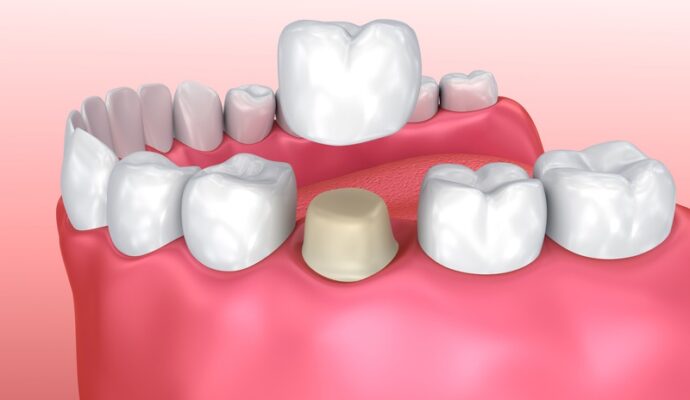Removable aligners, like Invisalign, are clear and discreet and can be taken out for eating and cleaning, offering comfort and convenience. However, they require discipline to wear 22 hours daily and might be costlier. Traditional braces, on the other hand, are effective for complex cases and often more budget-friendly. They work continuously but are more visible and make oral hygiene a bit trickier. Ultimately, the choice depends on your lifestyle, budget, and the specific needs of your teeth, so consulting with an orthodontist is key.
Let’s explore the pros and cons of each.
How They Work
Traditional Braces
Traditional braces use metal brackets and wires to gradually shift teeth into place. They’re glued to your teeth and adjusted periodically by your orthodontist. They’ve been around for decades and are often the first image that comes to mind when people think of orthodontics.
Invisible Aligners
Removable aligners are clear plastic trays custom-made to fit your teeth. They’re worn over your teeth and changed every few weeks as your teeth slowly move into the desired position. You can take them out for eating and cleaning, making them a popular choice for adults and teens who want a less visible option.
Aesthetic Appeal
One of the most significant differences between these two options is appearance. Many people, especially adults, feel self-conscious about wearing metal braces. Removable aligners offer a more discreet alternative, making them a favorite for those who wish to avoid the “metal mouth” look.
Comfort Levels
Removable aligners generally offer the best comfort. They’re made of smooth plastic and don’t have the sharp edges associated with metal brackets and wires. That said, both options can cause initial discomfort as teeth begin to shift.
Maintenance and Convenience
Caring for Traditional Braces
Braces require regular brushing and flossing to avoid plaque buildup. Cleaning can be more time-consuming as food particles easily get stuck. Regular visits to the orthodontist for tightening and adjustments are also part of the package.
Maintaining Aligners
Aligners offer the convenience of removal when eating or brushing, making it easier to maintain oral hygiene. However, they must be worn 20-22 hours per day to be effective, so discipline is necessary. Properly cleaning aligners is crucial to prevent discoloration.
Effectiveness for Complex Cases
Traditional braces are generally better suited for more complex orthodontic issues, such as severe crowding or bite problems. Aligners are effective for mild to moderate issues but might not be the best choice for challenging cases.
Treatment Duration
Treatment times vary from person to person. Traditional braces are usually worn for about two years, while aligners can sometimes offer a shorter treatment period. However, this depends largely on the individual’s specific dental needs.
Cost Considerations
Cost is an important factor in choosing between aligners and braces. Aligners can be more expensive, although the price can vary widely based on the provider and specific requirements. It’s worth noting that some insurance plans cover both options.
Orthodontic Visits
Wearing braces means regular visits to your orthodontist for adjustments. With aligners, visits may be less frequent, as several aligners are often provided in advance. This can save time for those with busy schedules.
Food Restrictions
With Traditional Braces
Braces require specific dietary precautions to avoid complications. Sticky foods, like gum or caramel, can adhere to braces and cause them to dislodge. Hard foods, such as nuts or hard candies, may break the brackets or wires. Additionally, these types of food can become trapped in areas that are hard to clean, increasing the risk of cavities and gum disease. To maintain good oral hygiene and ensure the effectiveness of braces, it is crucial to adhere to these dietary restrictions and clean your teeth thoroughly.
Eating with Aligners
Aligners offer greater mealtime flexibility compared to traditional braces. You can easily take them out to enjoy any food you like without restrictions. After eating, you simply brush your teeth before putting the aligners back in. This convenience allows you to maintain oral hygiene without the hassle of navigating dietary limitations often faced with braces. Enjoying a variety of foods without worry is a significant benefit, making aligners a popular choice for those seeking discreet and flexible orthodontic treatment.
Long-term Outcomes
Both braces and aligners can provide excellent results, but post-treatment care is crucial. With braces, a retainer is often required to maintain the new position of the teeth. Aligners also typically require follow-up treatment with a retainer.
Popularity Across Ages
Nowadays, adults seeking orthodontic treatment from top cosmetic dentists in Dublin, OH, often prefer aligners for their discretion and convenience. Teens may be divided, with some opting for the reliability of traditional braces and others for the invisibility of aligners.
Choosing the Right Option
Your choice between aligners and braces might depend on personal preference and specific dental needs. Consulting with an experienced orthodontist can provide clarity. Don’t hesitate to ask questions to gain a full understanding of each option.
Depending on your situation, you might also explore other options, such as dental implants therapy, if you’re looking into extensive treatment or replacement solutions for missing teeth. Aligners and braces are just two options in a broad spectrum of dental care solutions.
Final Thoughts
Aligners and traditional braces each have their advantages and drawbacks. Aligners offer a discreet, comfortable solution ideal for some, while braces remain a reliable choice for more complicated orthodontic cases. By weighing the pros and cons, you can decide which pathway is best for achieving your desired smile.




